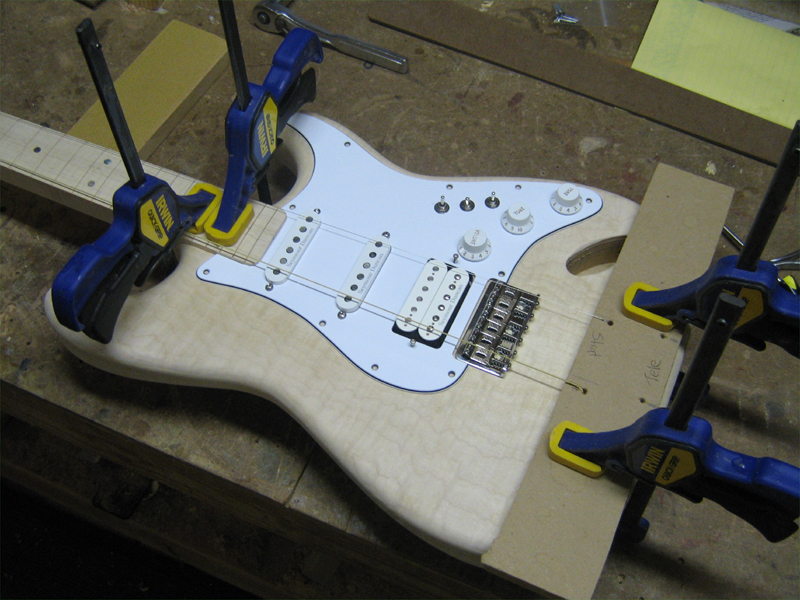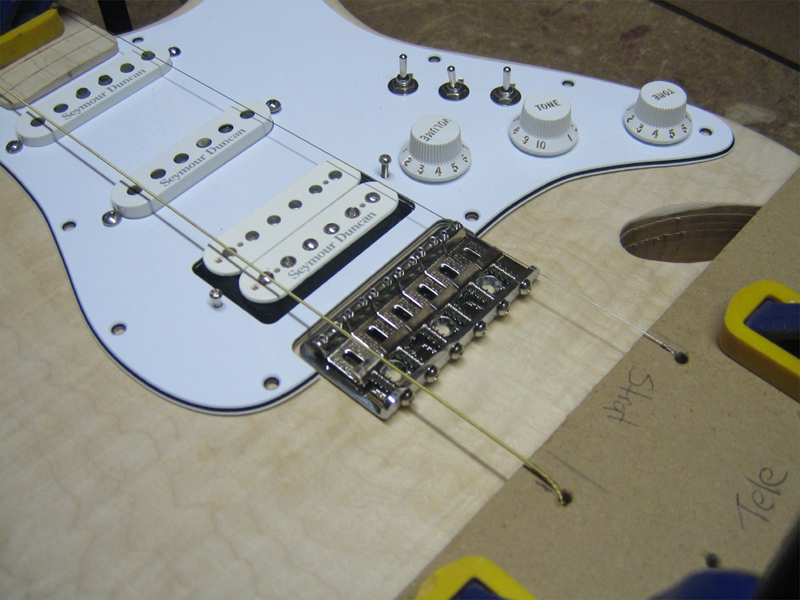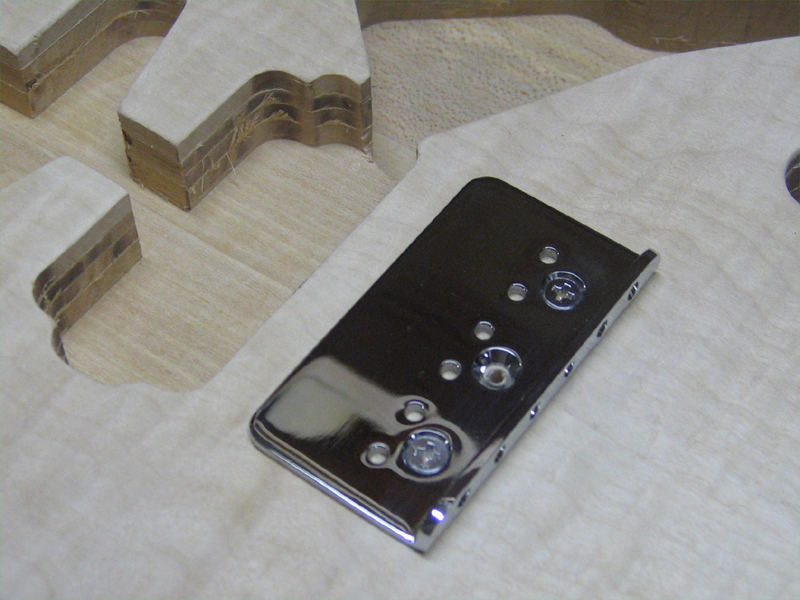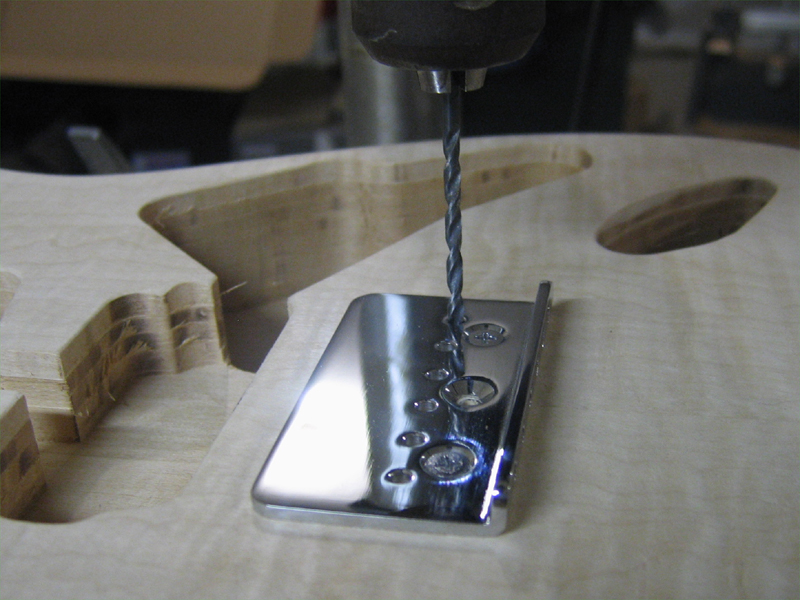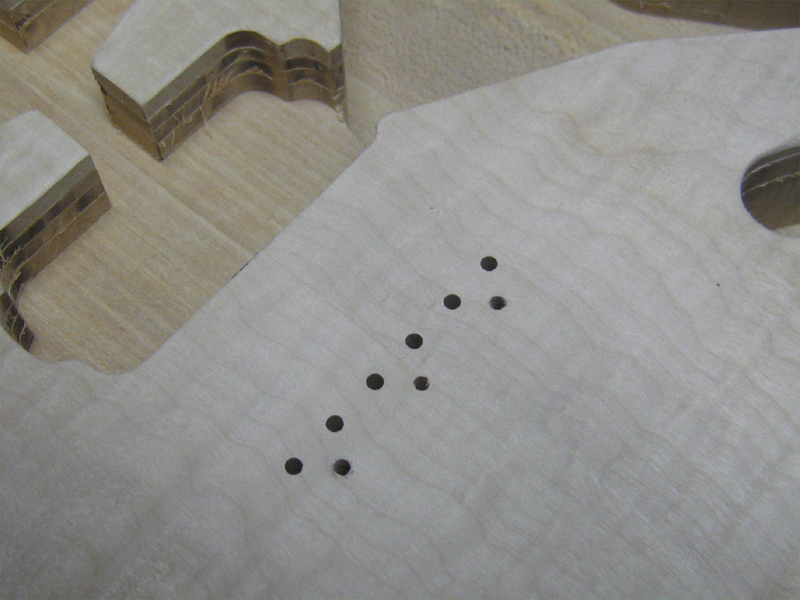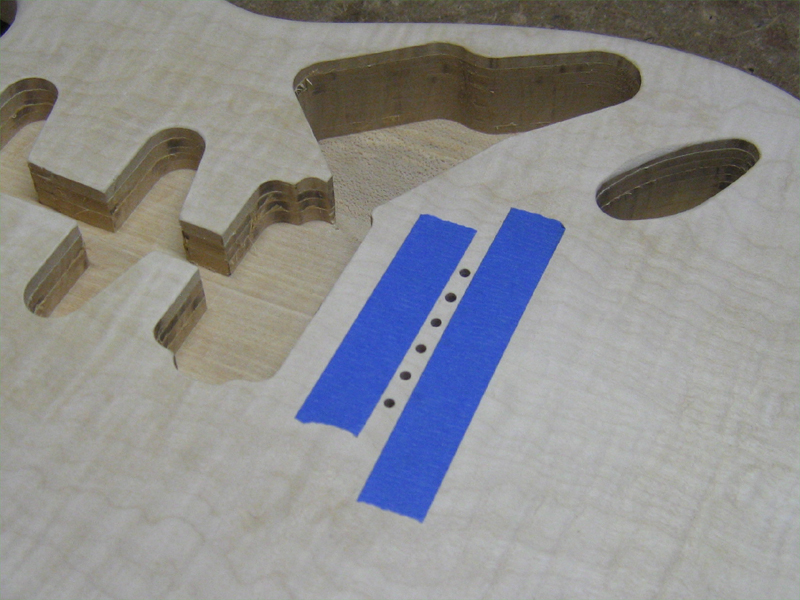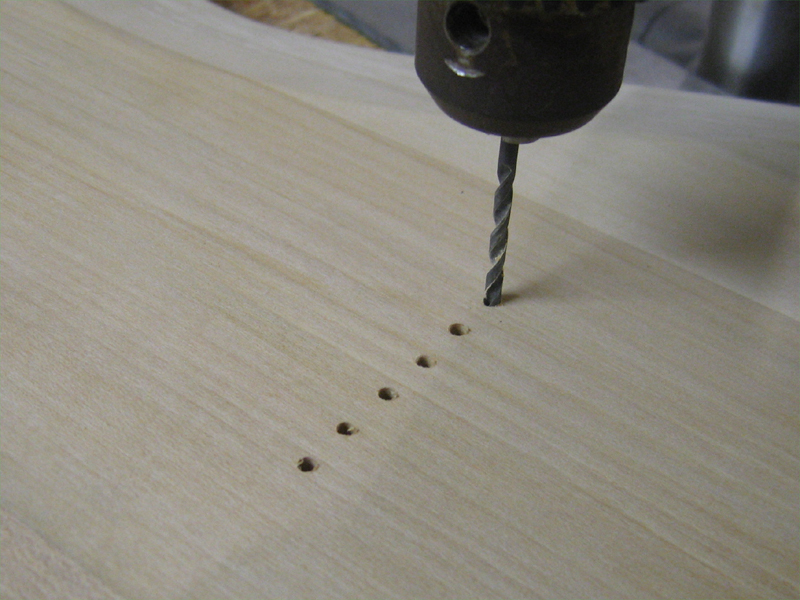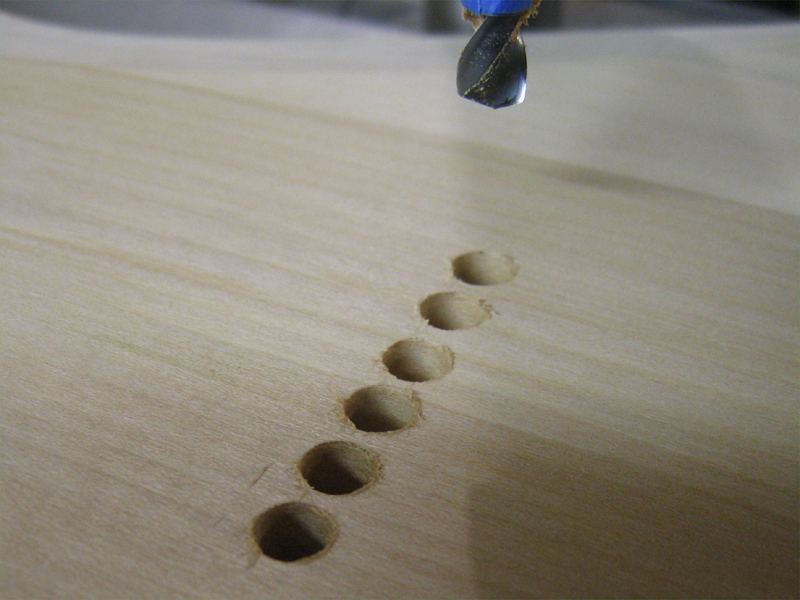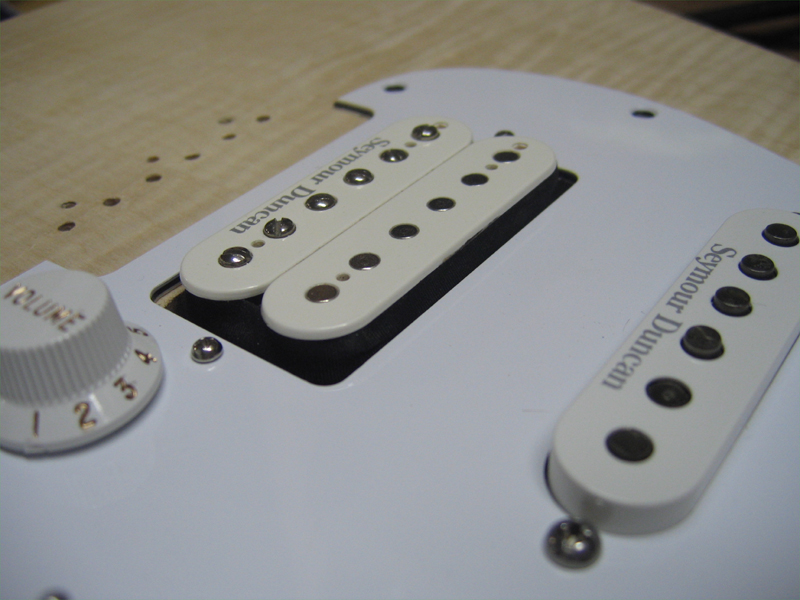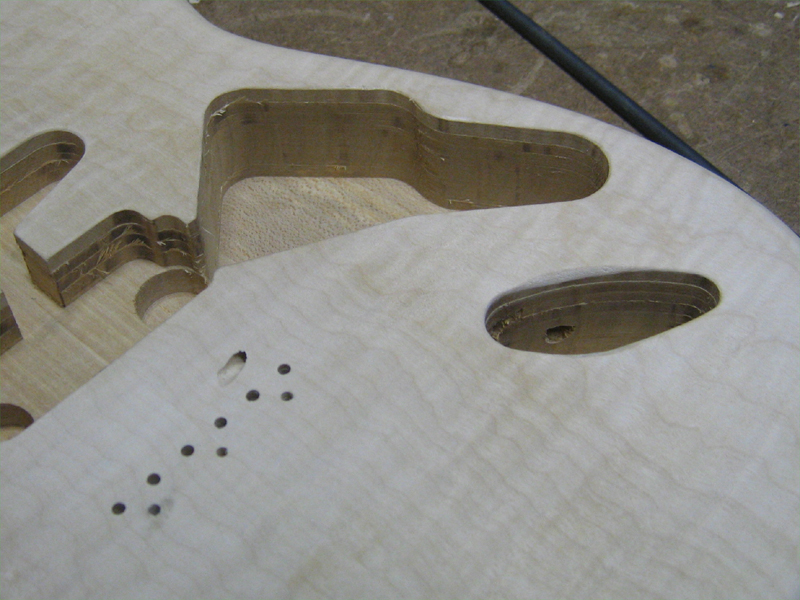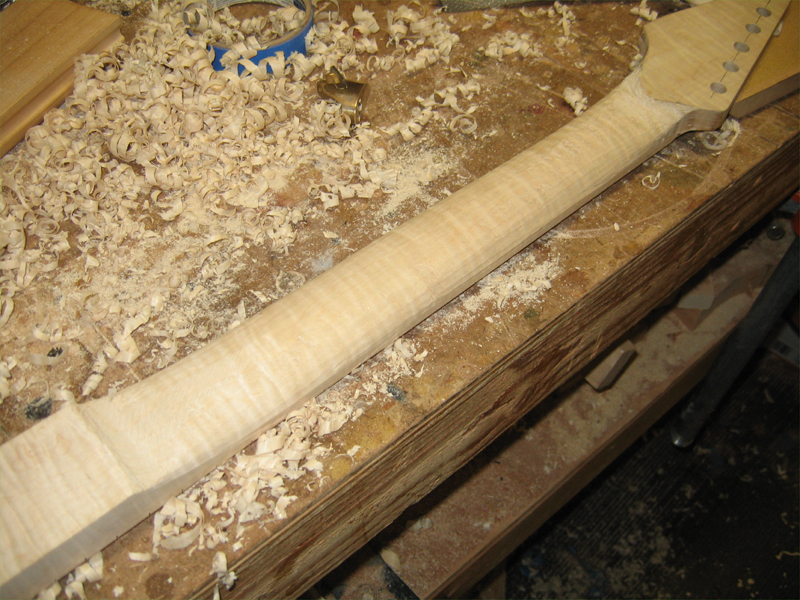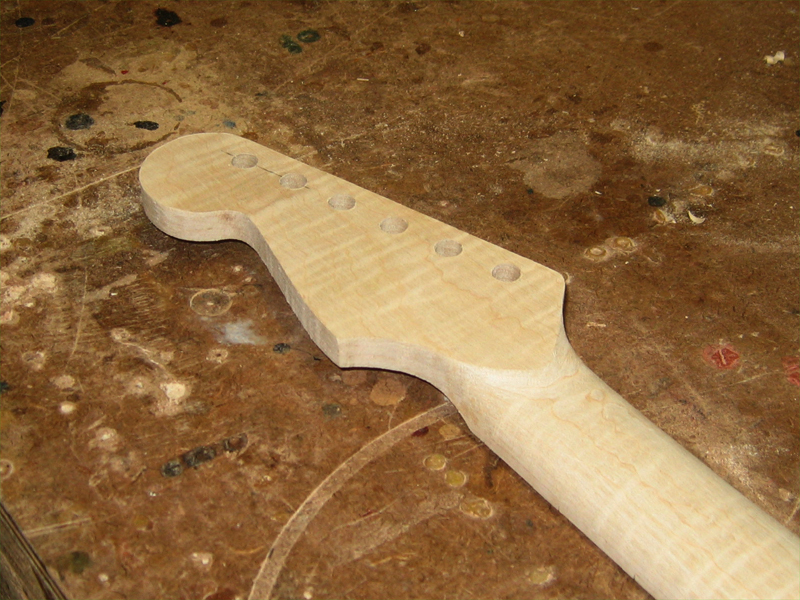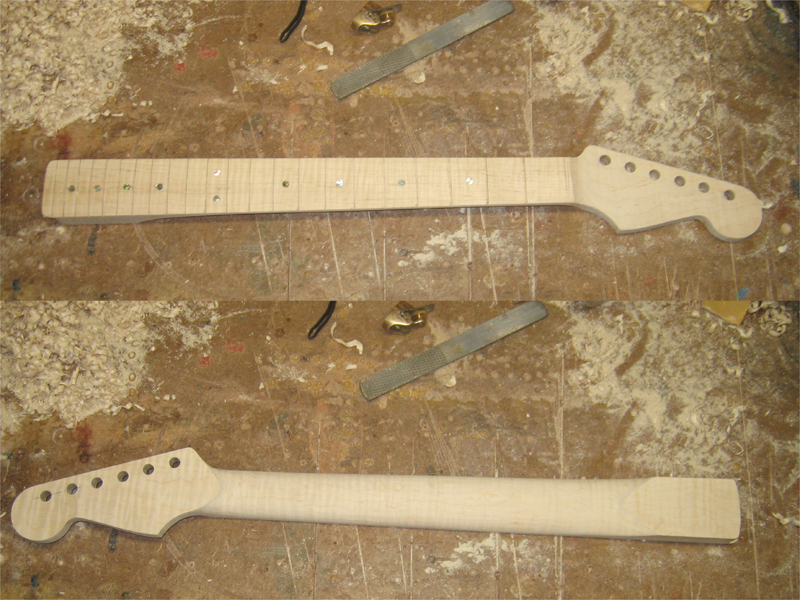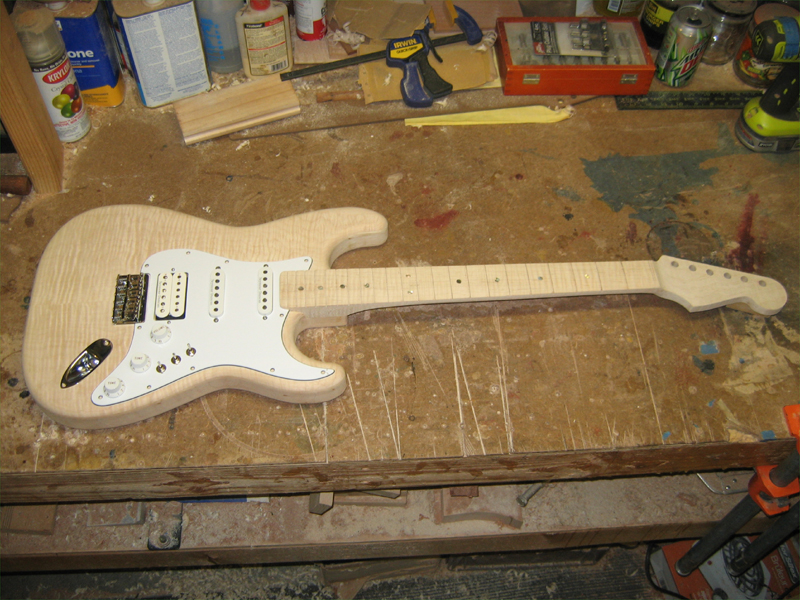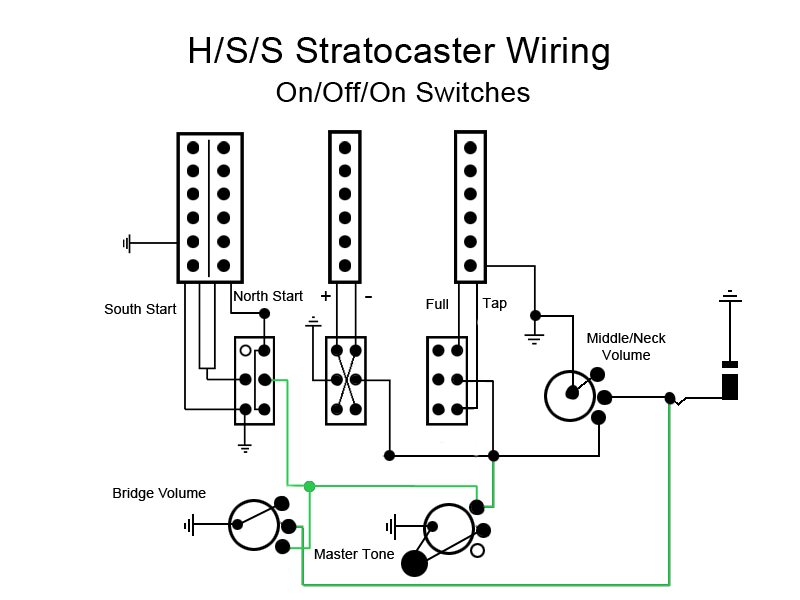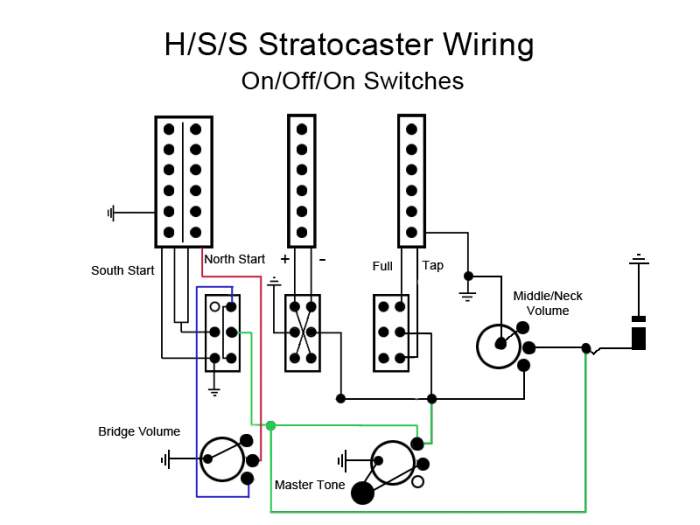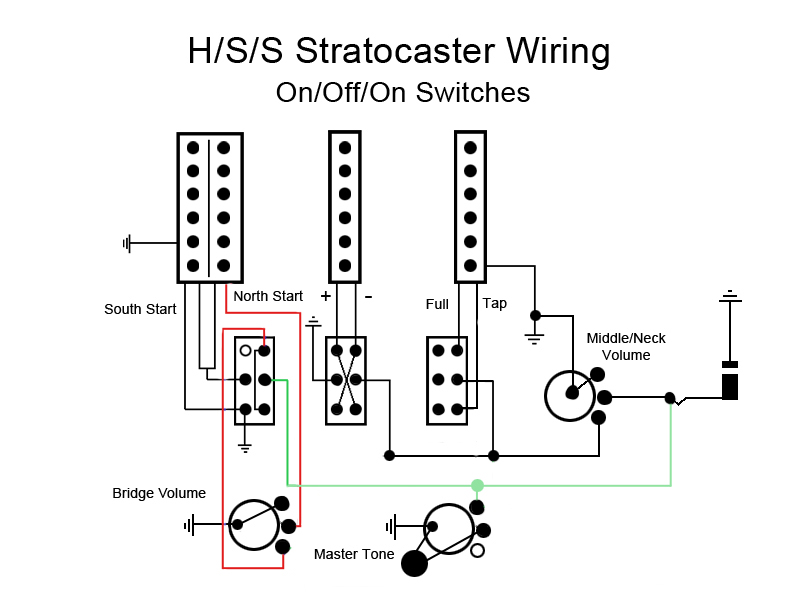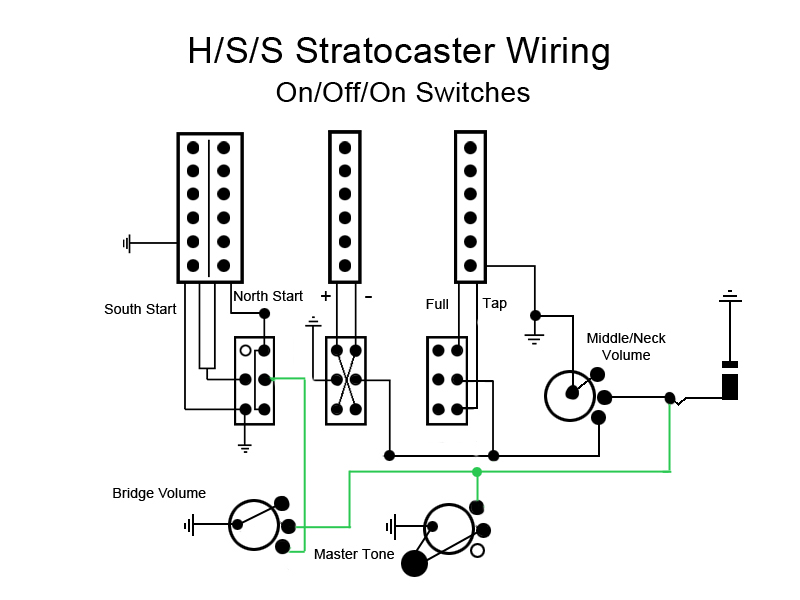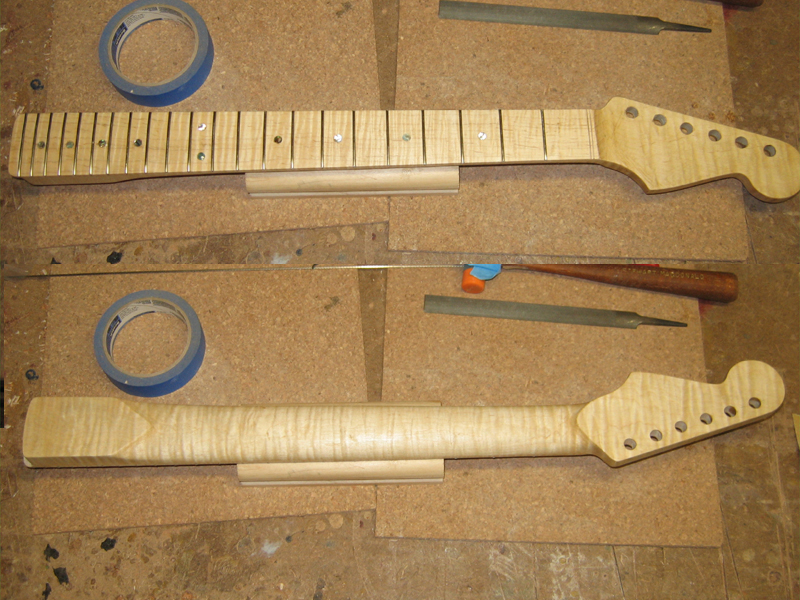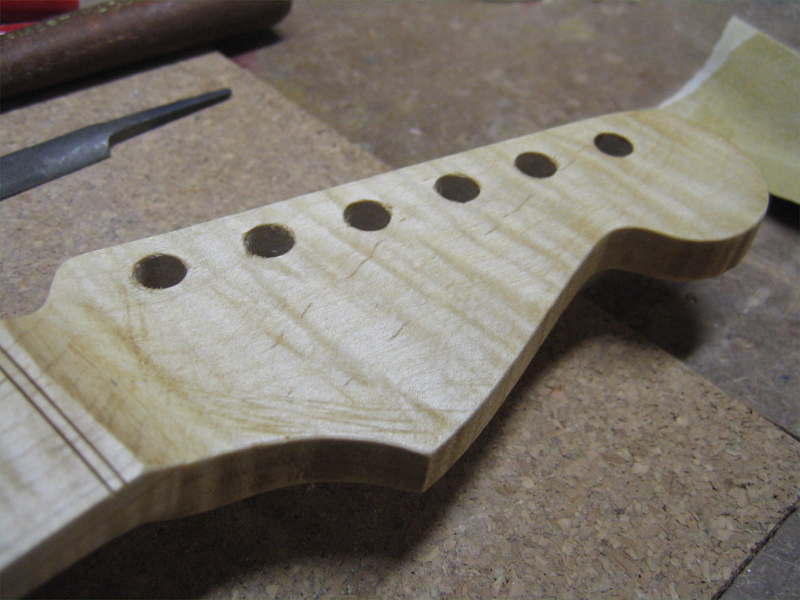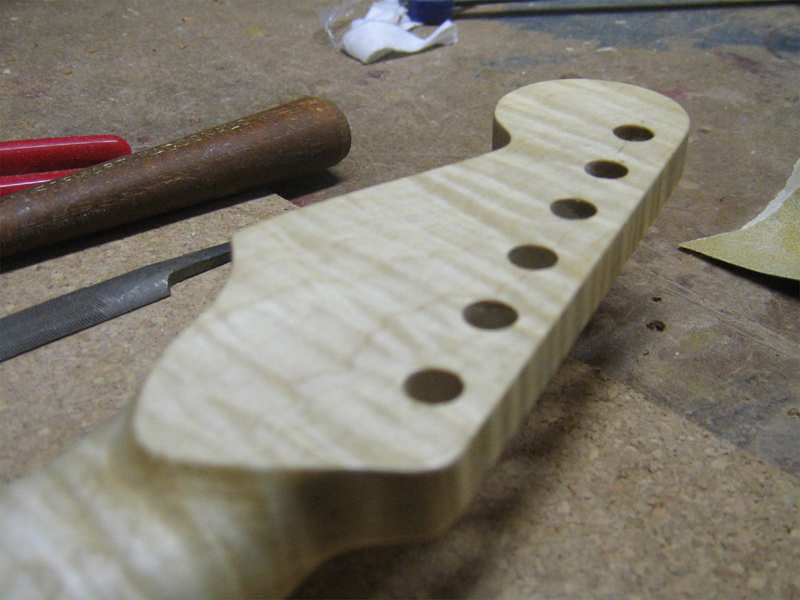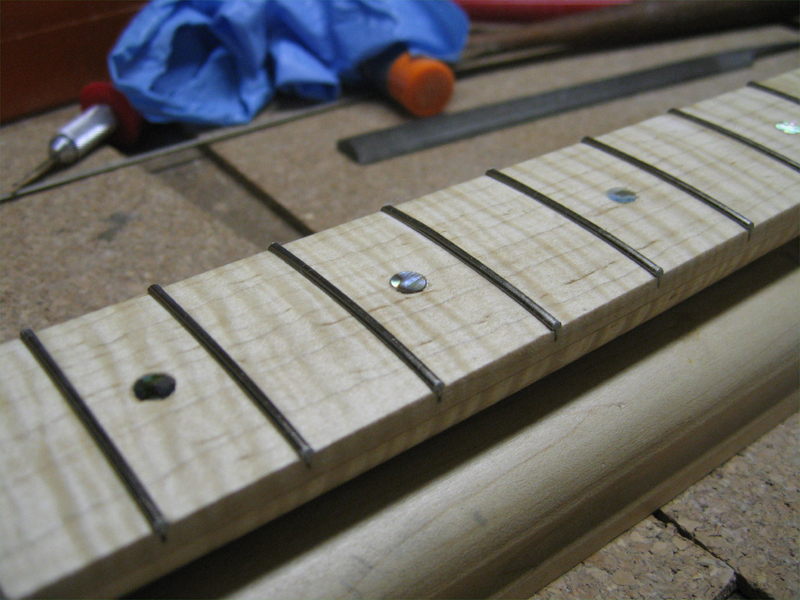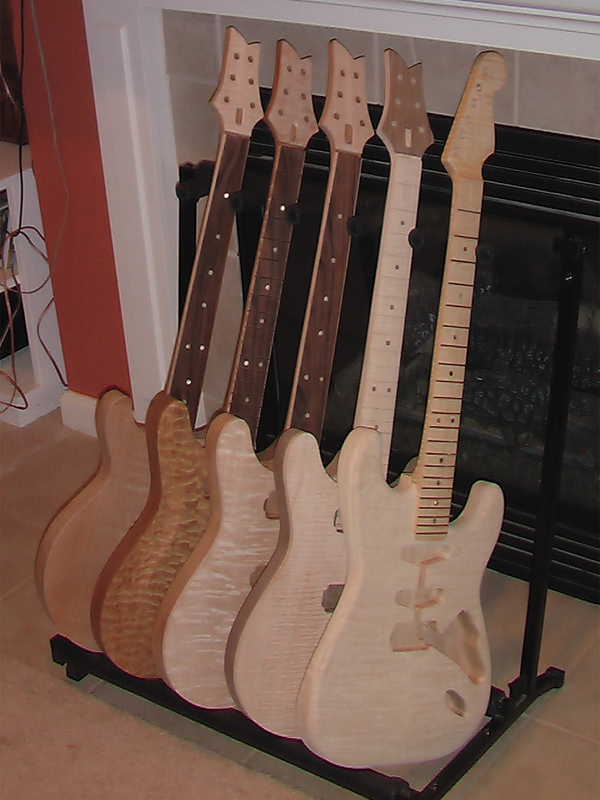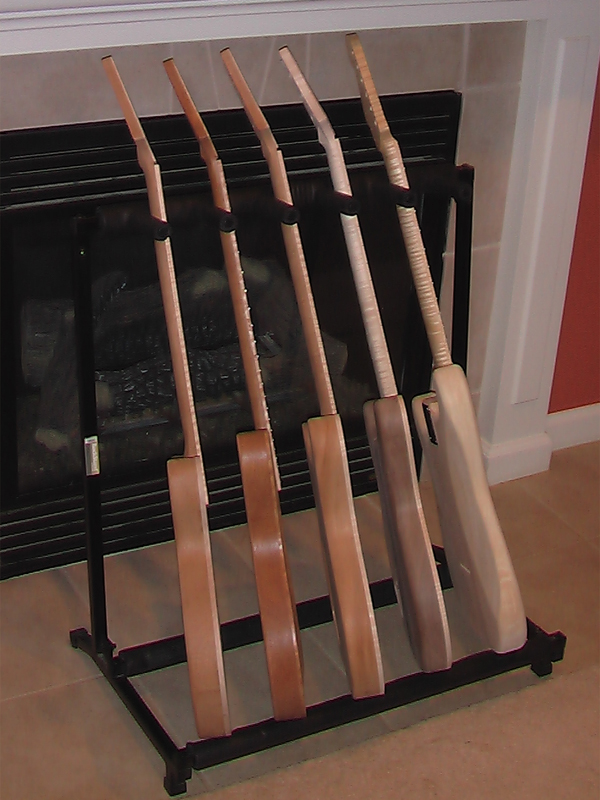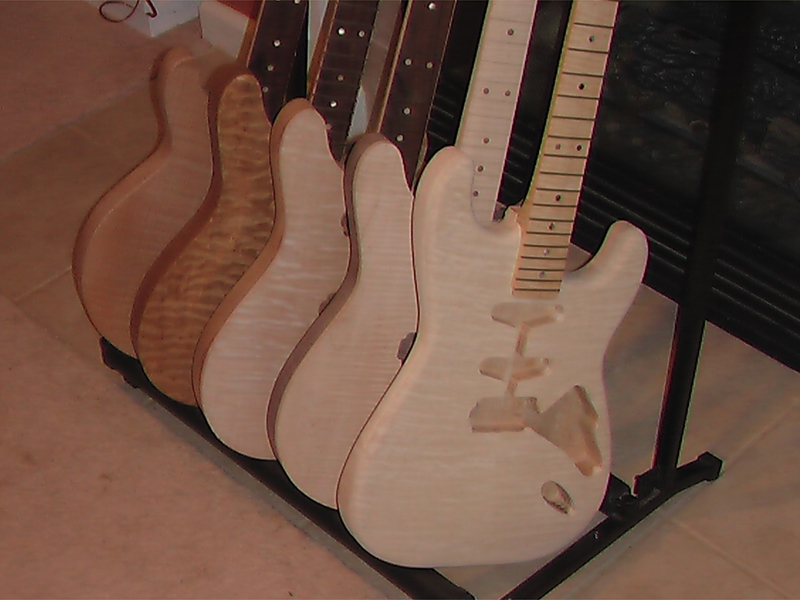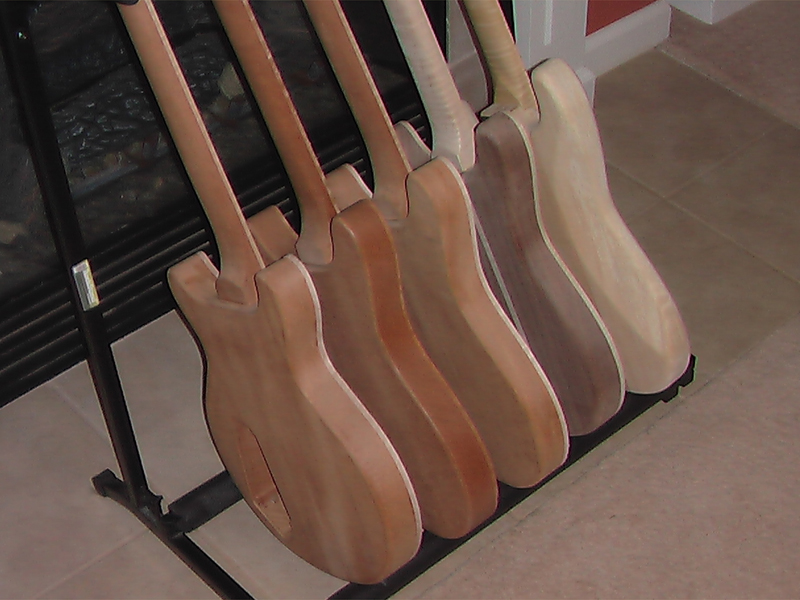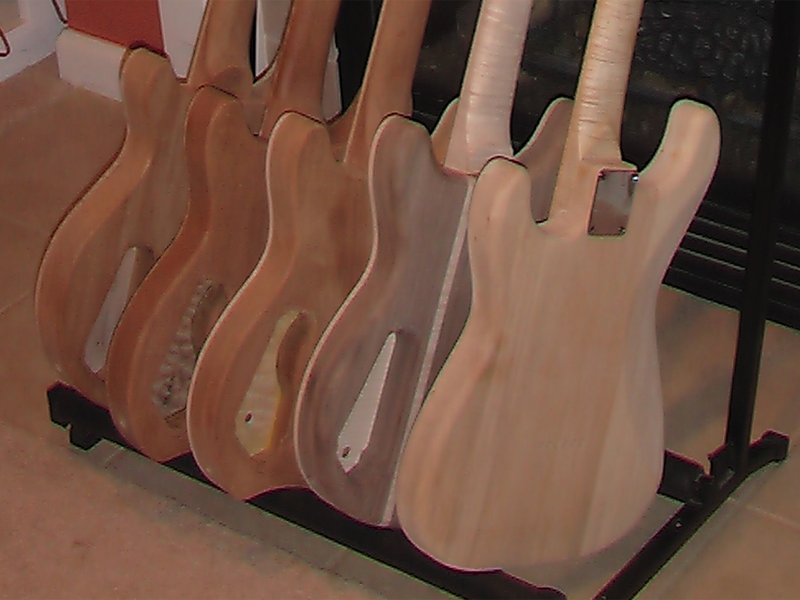After posting my control layout over in the Project Guitar Electronics forum, Ripthorn was good enough to confirm my suspicions about how I was feeding the tone controls.
Feeding them from the output side of the switches placed the 2 circuits in parallel which meant they would combine their results, as well as affect all pickups...not good.
So, I created paths from the input side (green traces) of the respective switch to feed each tone circuit independent of the other. If I understand it correctly, this is how it's done with a 5-way blade switch which has 2 banks, each with 3 inputs and 1 output. The output feeds the vol control but the tone feeds are taken from the input side thru internal connections in the switch.
So, applying this to my setup...The North coil of the bridge PU is always in play when the bridge PU is being used, so I took a path from the input side of it's switch location. The second pole on the coil tap switch of the neck PU was unused so I jumped each state of the PU across and used the output of the switch to feed the tone circuit. I think I'm on the right path here...comments and corrections welcome.
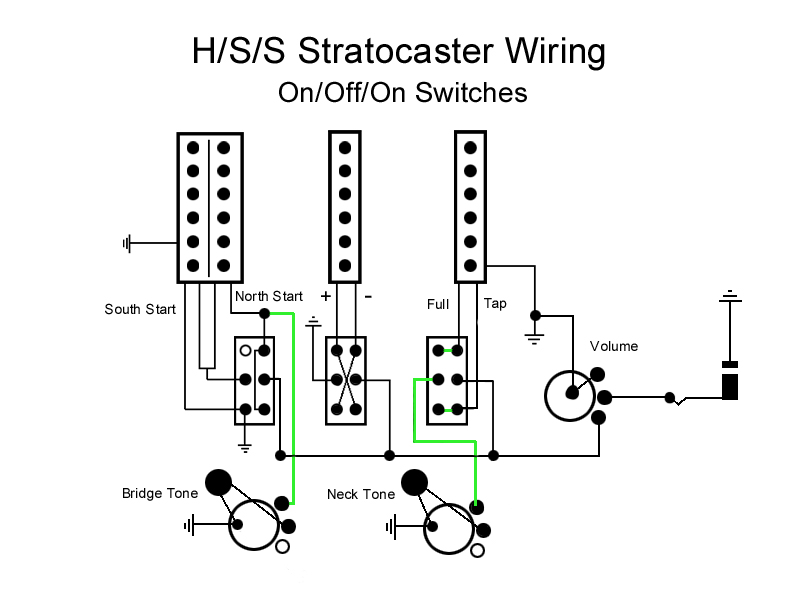
"Thought that is no longer limited brings experience that is no longer limited" Marianne Williamson.






 Reply With Quote
Reply With Quote
